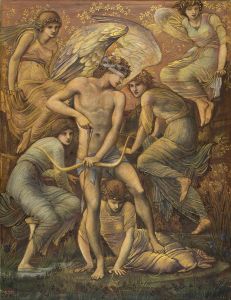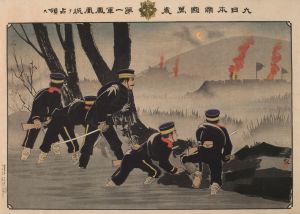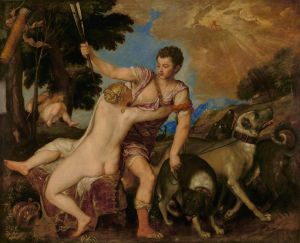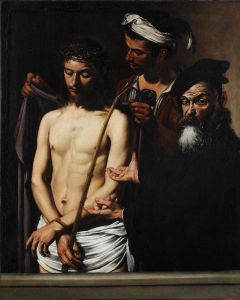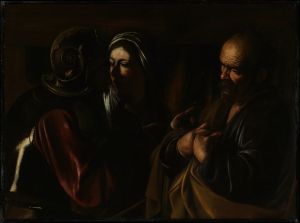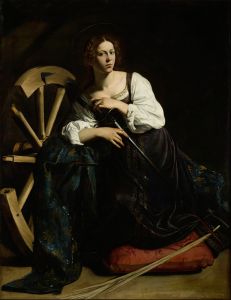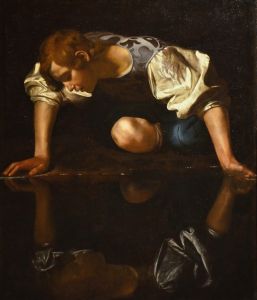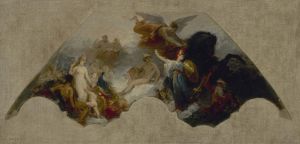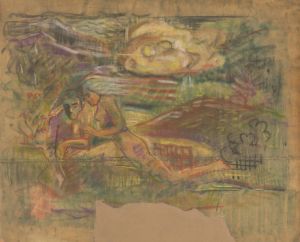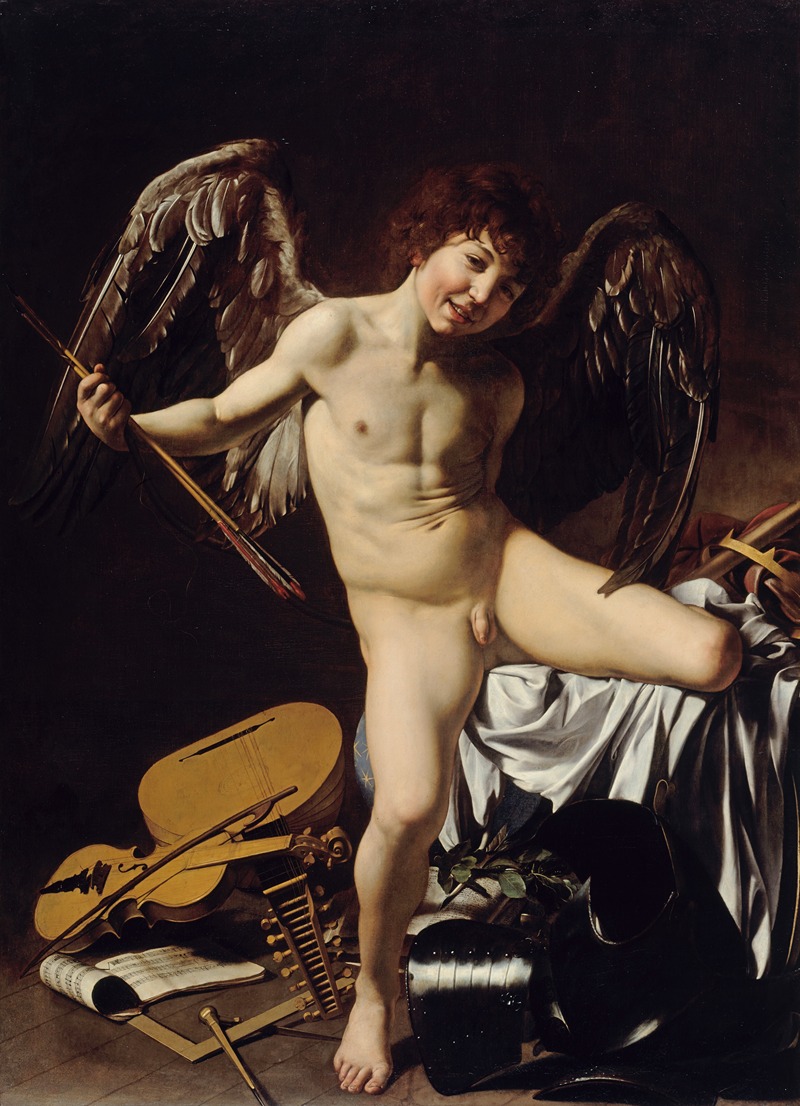
Amor Vincit Omnia
A hand-painted replica of Caravaggio’s masterpiece Amor Vincit Omnia, meticulously crafted by professional artists to capture the true essence of the original. Each piece is created with museum-quality canvas and rare mineral pigments, carefully painted by experienced artists with delicate brushstrokes and rich, layered colors to perfectly recreate the texture of the original artwork. Unlike machine-printed reproductions, this hand-painted version brings the painting to life, infused with the artist’s emotions and skill in every stroke. Whether for personal collection or home decoration, it instantly elevates the artistic atmosphere of any space.
Amor Vincit Omnia (Latin for "Love Conquers All") is a painting by the Italian Baroque master Michelangelo Merisi da Caravaggio. Created around 1601–1602, the work is widely regarded as one of Caravaggio's most striking and provocative pieces. It is currently housed in the Gemäldegalerie in Berlin, Germany.
The painting depicts a youthful Cupid, the Roman god of love, shown as a life-sized, almost fully nude figure. He is portrayed with dark, tousled hair, wings, and a mischievous smile, sitting atop a pile of worldly objects. These objects include a musical instrument, a suit of armor, a laurel wreath, and various manuscripts, symbolizing the arts, war, and knowledge. The disarray of these items suggests their subjugation to the power of love, aligning with the painting's title, which references a line from Virgil's Eclogues: "Omnia vincit amor et nos cedamus amori" ("Love conquers all; let us too yield to love").
Caravaggio's Amor Vincit Omnia is notable for its dramatic realism, a hallmark of the artist's style. The figure of Cupid is rendered with striking naturalism, emphasizing the physicality of the human form. The chiaroscuro technique, which Caravaggio is famous for, is evident in the strong contrasts between light and shadow, lending the figure a three-dimensional quality and drawing attention to his youthful, muscular body.
The painting was commissioned by Vincenzo Giustiniani, a prominent Roman patron of the arts and an admirer of Caravaggio's work. Giustiniani was known for his sophisticated taste and his interest in collecting innovative and challenging artworks. Amor Vincit Omnia was likely intended to reflect both the intellectual and sensual aspects of love, themes that resonated with the cultural and philosophical interests of Giustiniani and his circle.
The work sparked both admiration and controversy due to its bold depiction of Cupid. The figure's unabashed nudity and playful pose were unconventional for the time, pushing the boundaries of acceptable artistic representation. Some viewers interpreted the painting as a celebration of love's power, while others criticized its perceived sensuality.
Despite its initial controversy, Amor Vincit Omnia has been celebrated for its technical brilliance and emotional impact. It exemplifies Caravaggio's ability to merge realism with symbolic depth, creating a work that continues to captivate audiences centuries after its creation. The painting remains an important example of Baroque art and a testament to Caravaggio's enduring influence on the history of Western painting.





